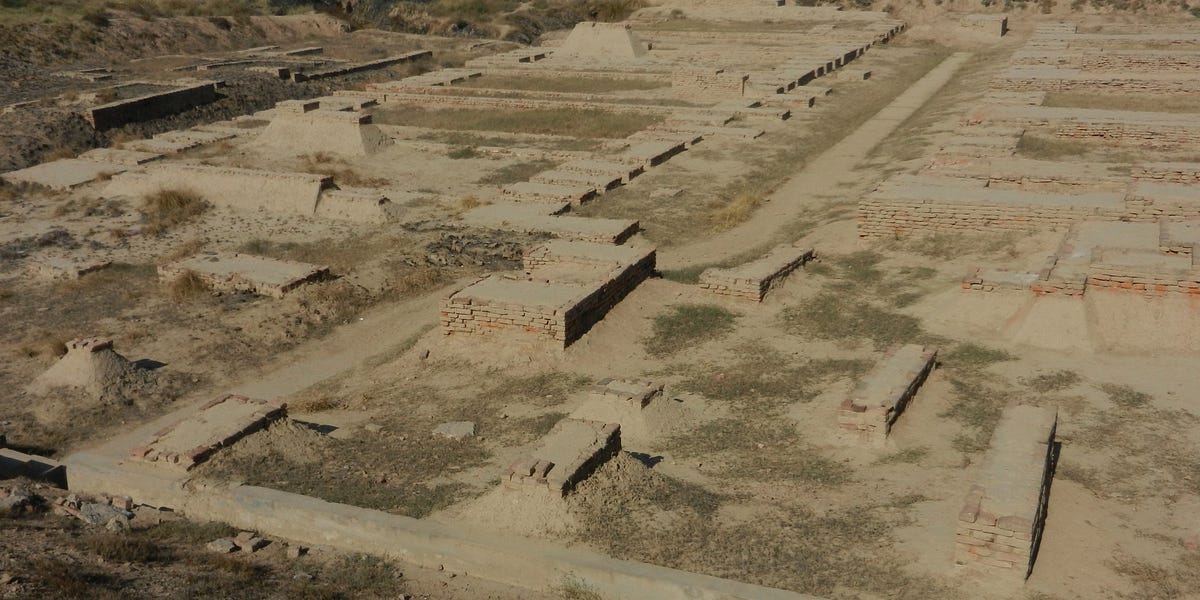A beginner’s guide to sociopolitical collapse

🌈 Abstract
The article discusses the concept of sociopolitical collapse, drawing on the work of archaeologist Joseph Tainter. It explores why societies become complex in the first place, the various theories of collapse, and Tainter's theory of diminishing marginal returns to complexity. The article then applies Tainter's ideas to the contemporary United States, examining signs of high sociopolitical complexity, economic stagnation, and growing societal discontent.
🙋 Q&A
[01] Why do societies become complex in the first place?
The article presents two main views on this question:
-
Class conflict view: The state reflects domination and exploitation based on divided interests, where a ruling class coercively subjugates the population out of greed and selfishness.
-
Integrationist/functionalist view: Even an egalitarian society faces problems that are most readily addressed by creating some form of hierarchy and social division of labor, such as managing limited resources or establishing military defense. Complexity solves social problems and serves population-wide needs.
Tainter adopts a moderate position, recognizing that complexity exists to solve problems and provide benefits, but also acknowledging that the distribution of the social surplus is not always fair, with elites potentially being overcompensated relative to their contribution.
[02] What is Tainter's theory of collapse?
Tainter rejects several common theories of collapse, such as resource depletion, insufficient response to circumstances, and elite mismanagement, as they do not explain the cross-sectional variation in how societies respond to challenges.
Instead, Tainter proposes a theory based on diminishing marginal returns to complexity. As a society adds complexity to address problems, the marginal benefits of that complexity eventually diminish, while the costs of maintaining it continue to increase. This can lead to a situation where the population would prefer less complexity, and various groups may start to resist or defect from the system.
Tainter argues that collapse can temporarily be prevented by the acquisition of a new technological capability or energy subsidy, which can support a higher degree of complexity. However, the returns to complexity will still eventually diminish, and the society will inevitably reach a point where the population would prefer less complexity.
[03] How does Tainter's theory apply to the case of the Roman Empire?
The article examines Tainter's in-depth analysis of the collapse of the Western Roman Empire. Under the Republic, Rome's policy of expansion provided an "energy subsidy" in the form of looted resources from conquered territories, allowing the empire to thrive without regular taxation of Roman citizens.
However, as expansion slowed and eventually halted, the empire began to feel the weight of its complexity, leading to fiscal problems and the need for increased authoritarianism and social control under the Dominate. This further increased the complexity of the system, resulting in apathy and defection among both the elite and the general population.
The article suggests that the collapse of the Roman Empire was not due to a single factor, such as barbarian invasions or economic stagnation, but rather the result of the diminishing marginal returns to the empire's high level of social complexity.
[04] How does the article apply Tainter's ideas to the contemporary United States?
The article argues that there are several concerning signs that the United States may be experiencing Tainter-style dynamics:
- High sociopolitical complexity, with a growing "incoherence" and "self-defeating complexity" in government.
- Economic stagnation, with the burden of stagnation falling disproportionately on the lower half of the income distribution.
- A wave of "nihilistic populism" on both the left and right, reflecting growing societal discontent and "apathy to the well-being of the polity."
The article suggests that the United States may be deep into the range where the marginal value of complexity is negative, inhibiting value creation more than solving problems. It warns that the country may be a "ticking time bomb" for collapse, while also noting that there are reasons not to panic, as the dynamics of modern industrial societies may differ from the historical cases Tainter studied.
[05] What are the policy implications of Tainter's theory for the United States?
The article argues that the policy actions needed to address the risk of collapse in the United States are effectively the same as those needed to produce economic abundance. These include:
- Culling net-harmful social complexity and eliminating low-value bureaucracy and procedure.
- Deploying new technologies to provide new resource subsidies and make it easier to deploy and iterate at scale.
- Ensuring that prosperity is widely shared, not only through transfers but in a primary income sense.
- Restoring the government's ability to act effectively and earn societal trust.
The article suggests that while the risk of collapse provides additional motivation, the abundance agenda is valuable in its own right, as it would lead to a more prosperous and technologically advanced society. It calls for a concerted effort by those working on abundance, progress studies, and supply-side politics to address these challenges.